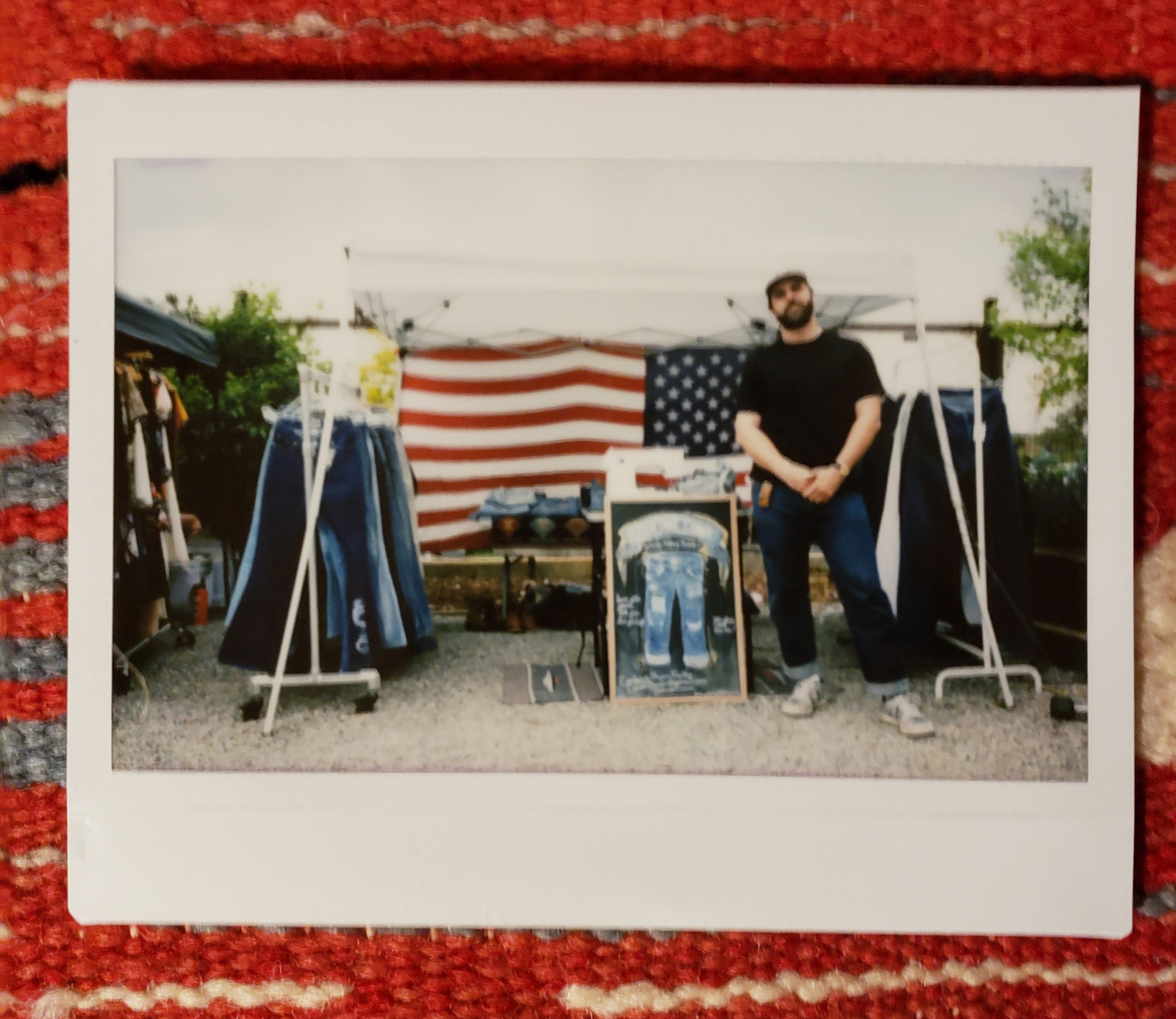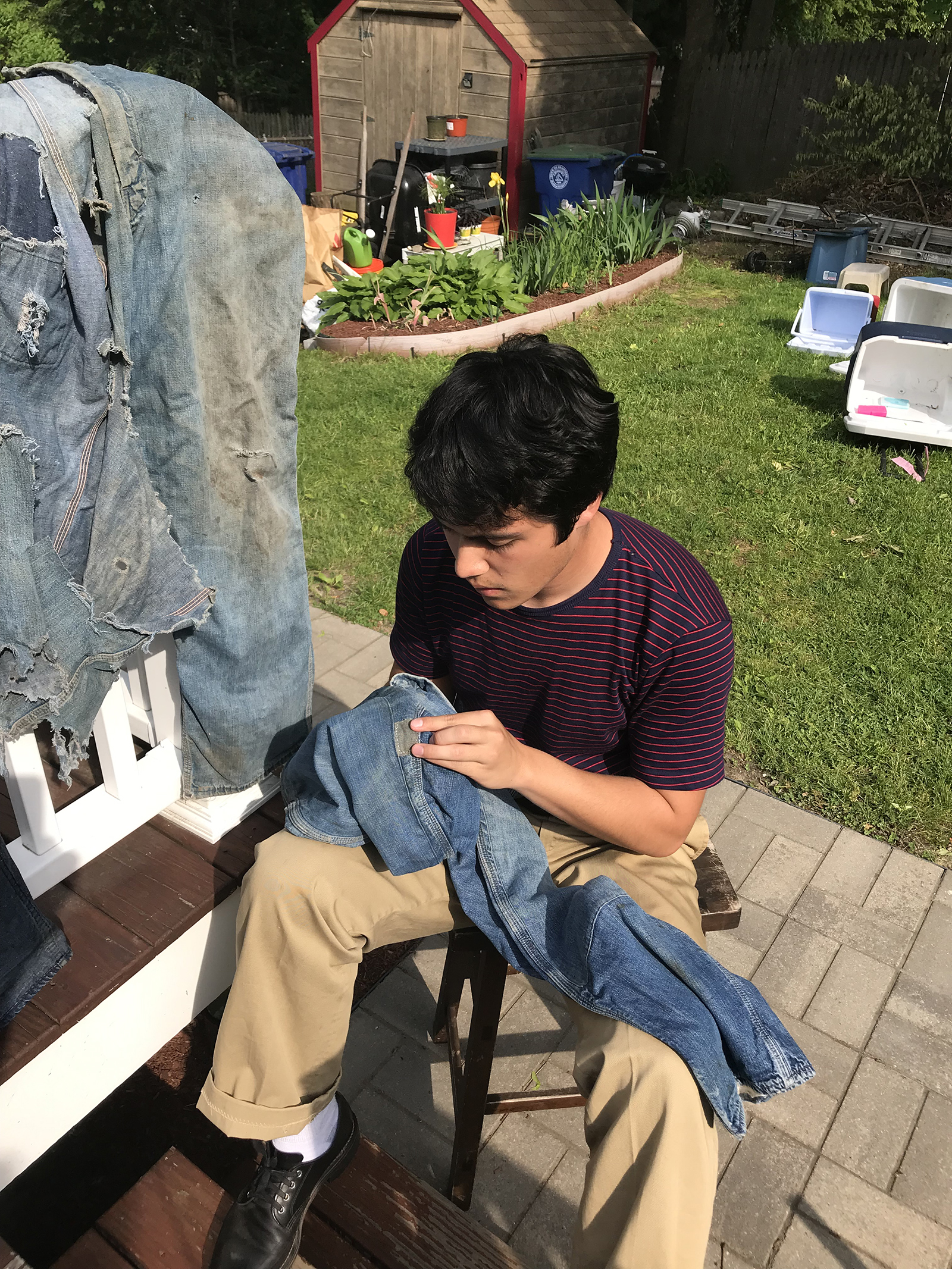Colton Madore is a contributing writer and business officer for…
Americans love denim. So much so, the fabric is woven into our cultural history — from the Depression Era images of Carl Mydans, featuring workers wearing baggy jeans, to Rosie the Riveter’s denim shirt, James Dean’s rebellious pair, Jimmy Carter’s presidential blues and Obama’s dad jeans, Bruce Springsteen’s 1984 Born in the USA album cover, and Lil Nas X’s lyrically-inspired partnership with Wrangler. This may explain why Time magazine names Levi 501s the “Fashion Item of the 20th Century.”
But this popularity comes with a heavy environmental price. It takes almost 2,900 gallons of water to make one pair of jeans, according to a study by the Textile Institute, an organization that educates people on textile and apparel industries globally. Beyond the amount of water, the fiber dyeing process adds dangerous pollutants to the environment, says Joyce Hu, co-founder of the Sustainable Fashion Alliance, a company that educates small and mid-size fashion companies on sustainability. In fact, denim makers are responsible for 95% of the 50,000 tons of indigo dye produced annually, and that blue hue demands a toxic process that includes petroleum extraction, cyanide, and formaldehyde.
Many of those chemically rich dyes find their way into the water supply, says Hu. But it’s not just the indigo dyes that can contaminate the water. Colleen Coughlin, founder of The Full Edit, which helps individuals upcycle their old garments, says that many of today’s jeans feature microfibers (thanks to the use of fabrics that add to that stretch quality such as lycra). The washing cycle releases those microfibers, and those too end up in the water supply. And, speaking of washing jeans, a common point of disagreement is the number of times jeans should be washed, says Coughlin. Some argue that jeans should only be washed every four to five times, but based on a study from Levi Strauss, jeans should only be washed every 10 times to prevent wear and tear while saving water.
[Sewing] literally becomes breathing where it’s like you stitch in and stitch out, or you mend up, mend down.
And because of the constant fashion cycle (washed, faded, skinny, boot cut, whiskers, bedazzled, girlfriend, boyfriend), many pairs of jeans end up in the donation bin at best and the trash bin at worst with no consideration of the more sustainable alternatives available. But there are ways to stem the jean tide (U.S. consumers buy 450 million pairs of jeans a year). Donation centers such as Goodwill can separate the textile waste, and these unwearable garments are then resold in bulk to buyers who make them into insulation, Hu says.
If your favorite pair experiences a rip or a tear, consider extending their life with your own sewing skills. To help you, three denim repairers with a range of experience share their mending strategies. Trust us. It’s easy. And it beats adding to the dye runoff and microfibers polluting rivers around the globe.
1. Repair your blues by hand
Sewing can seem like one of the most daunting tasks to do, especially if you have no experience, but it’s really a great skill to have. If you’re a beginner, 34-year-old Ramell Frederick, a New York City-based denim repairer with four years of experience, suggests grabbing a needle and thread as it’s easier than operating a sewing machine. Frederick used to work for Denim Therapy, a clothing alteration service that specializes in denim. “[Sewing] literally becomes breathing where it’s like you stitch in and stitch out, or you mend up, mend down,” he says.
2. Old fabric, new life
If you have a small rip and don’t want to spend money on a new piece of fabric, check your closet and see if you have an old pair of jeans you no longer wear and can use for scraps, says Frederick. If there’s nothing there, your next best bet is your local thrift store or Goodwill.
3. Tell me about Sashiko
There are many different stitching techniques for repairing. As a Denver-based denim repairer, collector, and seller with three years of experience, 33-year-old Ryan Finke suggests the Sashiko method. This mending technique began in the farmlands of Japan due to farmers not having access to new work garments. The workers took old pieces of fabric and sewed it on top of the rips, stitching back and forth, ultimately creating the Sashiko method.

4. Thick needles cut deep
There are hundreds of sizes when it comes to needles. It all depends on if you’re sewing by hand or machine. For hand, 22-year-old Braintree, Mass.-based denim repairer Ben Keefe, who’s been a vintage collector of denim for over two years, says a thick needle is best as it will go through the denim fabric easier. The best size is anything over a 16.

5. Buy cotton or polyester thread
Across the board, the denim repairers agree that polyester or cotton thread is the best bet, but it’s up to each individual’s preference. For Keefe, polyester is strong and thick, he says. For Frederick, cotton is better as most jeans are made with 100% cotton, and it will look more natural.
Colton Madore is a contributing writer and business officer for Rooted. He received his master’s degree in Magazine, Newspaper and Online Journalism at the S.I. Newhouse School of Public Communications at Syracuse University. He also has a bachelor’s degree in fashion design and retailing with a concentration in merchandising from Framingham State University in Massachusetts. He is passionate about fashion, writing, the beach, and bringing light to topics that are not popularly covered.

